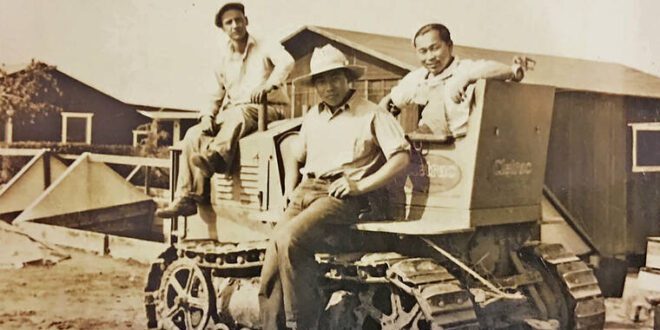Japanese-Language Newspapers: Connecting Immigrants to their Homeland
As Japanese immigrant communities grew in Hawaii and on the U.S. mainland, locally published Japanese-language newspapers kept immigrants in touch with events in Japan, reported on social and cultural events within the community and presented local Japanese perspectives on immigration and labor issues.
In Hawaii alone, there were more than 20 Japanese publications between 1893 and 1942.
The Impact of Pearl Harbor
The Japanese publications in the United States were shut down after Japan attacked Pearl Harbor. Some were revived under military supervision to communicate with older immigrants who did not speak English. The U.S. government required newspapers to be renamed in order to take out any reference to Japan. In Hawaii, the Nippu Jiji newspaper became the Hawaii Times and the Hawaii Hochi was renamed the Hawai‘i Herald.
Post-War Independence
The Japanese-language press regained its editorial independence after World War II ended. Circulation dwindled as English became the first language of younger Japanese Americans, but the newspaper archives remained important cultural resources.
“Paper Chase”: Documenting the Japanese-American Experience
And so, when the Zentoku Foundation, a California-based cultural organization that helps young Japanese people connect with the experiences of previous generations, decided to make a documentary about the Japanese experience in the United States, the documentary was named “Paper Chase.”
“There were so many films about before the war, during the war, after the war, but nothing about connecting everything together,” said Mark Nakakihara, Zentoku Foundation president. “What better way to put this history together (than) by doing it with the Japanese newspapers because the Japanese newspapers basically covered community things. Three of these newspapers have been printing for over 100 years. One of them is the Hawaii Herald, and then you’ve got the North American Post up in Seattle. And then the Rafu Shimpo down here in Los Angeles. These three newspapers have been printing for over 100 years, and they’ve been covering more community, more local stuff, which has kept the communities connected.”
“Paper Chase” documents the experiences of Japanese immigrants and Japanese Americans through the decades with particular emphasis on the forced incarceration of people of Japanese ancestry on the West Coast and Hawaii after Japan’s attack on Pearl Harbor, and the campaign for reparations and redress in the decades that followed.
The Importance of Community Publications
“We put three storylines together,” Nakakihara said. “One is the 150 years Japanese people have been (in the U.S.). The second one is the newspapers covering it for such a long time, and why they cover what they cover. The third one is that everything’s kind of dying, going away.”
The Survival of Japanese Publications in Hawaii
The good news is that two publications are still published in Hawaii for the Japanese community. The Hawaii Herald resumed publication as the Hawaii Hochi in 1952; it is currently published six days a week.
Hawaii Hochi Editor Noriyoshi Kanaizumi, answering questions with the assistance of translator Grant Murata, said that the paper’s mission has evolved since it was founded in 1912.
“When the paper was established it was as a way for the first-generation people who immigrated here to get, of course, news, but (also) get to know about the place that they’re living in,” Kanaizumi said. A century later, a large number of the paper’s subscribers are Japanese nationals living in Hawaii. “Now the responsibility is to try and make the Japanese national who’s living here understand the Japanese American society. That’s what I feel the paper’s mission is.”
Kanaizumi hopes subscribers understand that he runs stories about things that local Japanese people are interested in, and that Japanese nationals will see the overlap between the two groups.
The Hochi’s sister publication, the Hawai‘i Herald, is an English-language paper, published twice-monthly that covers people and events of interest in the Japanese community. Editor Kristen Nemoto Jay said she is working to produce more relevant stories that sansei (third) and yonsei (fourth) generations care about.
“My challenge now is to try to get my generation, the yonsei generation, and even maybe the gosei generation, the fifth generation thereafter, to want to still learn and be interested in their culture.”
Preserving Cultural Heritage
Nakakihara hopes the “Paper Chase” documentary will inspire young Japanese Americans to investigate their heritage.
“(Japanese) cultural things are disappearing, and once they’re gone, they’re gone. They’ll never be created again,” he said. “We’re trying to get the younger generations to realize that you might take these things for granted but if you don’t do anything about it, they’ll be gone. There won’t be anything for your children or your grandchildren down the road.”
 Mind Uncharted Explore. Discover. Learn.
Mind Uncharted Explore. Discover. Learn.




